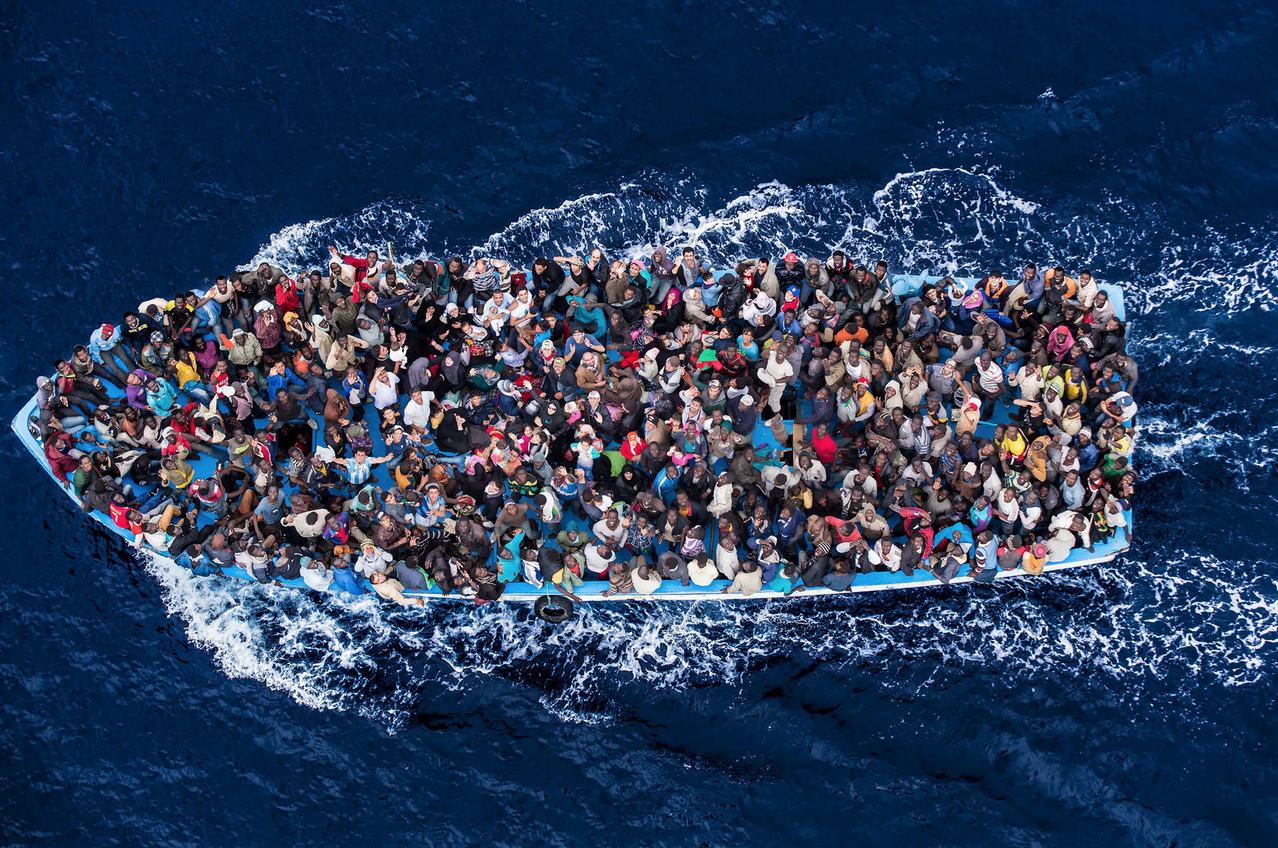Two years after sparking an unprecedented humanitarian and political crisis, the largest influx of refugees and migrants into Europe since World War II has finally slowed down, according to the International Organization for Migration (IOM).
Last week, the IOM reported that the number of people who arrived in Europe by sea in 2017 was less than half as many as the previous year. Less than 172,000 people – mostly fleeing conflict in the Middle East and poverty in Africa – crossed the Mediterranean into Italy, Greece, Cyprus and Spain in 2017, compared to more than 363,000 in 2016.
“We can tell you with confidence that the numbers from North Africa to Italy this year are under 120,000,” IOM spokesperson Joel Millman said, according to Reuters. “…That’s the lowest in the last four years for arrivals in Italy.”
Greece also experienced its lowest intake in four years, according to Millman.

Although the count hasn’t been finalized yet, migrant deaths in the Mediterranean also dropped significantly – from 5,143 to 3,118 – and by a third globally, from 7,932 to 5,376.

“We think of those as extremely positive developments,” Millman said.
Fighting among smuggling groups was partially responsible for the reduction, according to Millman, but so were more patrols and rescues off the coast of Libya.
The patrols were directly strengthened by Italy, which has received the bulk of arrivals since the EU brokered a deal with Turkey in 2016 to cut off the main East Mediterranean route to Greece. By training the Libyan coast guard, repairing its boats and recruiting powerful militias to stop traffickers, Italy saw a huge drop in the number of migrants entering its shores in the second half of 2017.
Italy’s Foreign Minister Paolo Gentiloni recently gushed that 2017 represented a “historic transition from immigration managed by criminals to controlled, legal and safe migration,” according to PRI.
Ultimately, that is the goal – to “facilitate orderly, safe, regular and responsible migration and mobility of people, including through the implementation of planned and well-managed migration policies” – according to one of the targets of Sustainable Development Goal 10, which aims to reduce inequality.
However, the major policies that have successfully stemmed the flow of migrants into Europe so far have been nothing short of controversial.
U.N. High Commissioner for Human Rights Zeid Ra’ad Al Hussein said in November that the Italian-led policy of helping the Libyan coast guard intercept and return migrants in the Mediterranean is “inhuman.”
“The international community cannot continue to turn a blind eye to the unimaginable horrors endured by migrants in Libya, and pretend that the situation can be remedied only by improving conditions in detention,” he said, as he called for the decriminalization of irregular migration to protect the human rights of migrants.
Human rights advocates have also criticized the EU-Turkey deal, in which migrants who entered the Greek islands irregularly are returned to Turkey. In exchange, Turkey received 6 billion euros to help with its massive refugee community, most of whom have fled Syria.
As the Syrian war winds down, the influx to Turkey (and Greece) has slowed, but human rights advocates say that asylum seekers are not safe in Turkey, which refuses to grant full refugee status to non-Europeans. Unfortunately, the conditions of Greek detention camps are also squalid and unbearable for those whose cases are being reviewed on the islands,
Again, the end goal is “orderly, safe, regular and responsible migration and mobility of people.” The fact is, migration plays an important role in eradicating global poverty, reducing inequality and, for some, surviving conflict.
A slow-down in the “European migrant crisis” is undoubtedly a relief, especially for host countries. But numbers do not paint the whole picture. Migration is still deadly for too many, and for many who survive, it’s no better than the unbearable conditions they fled.
